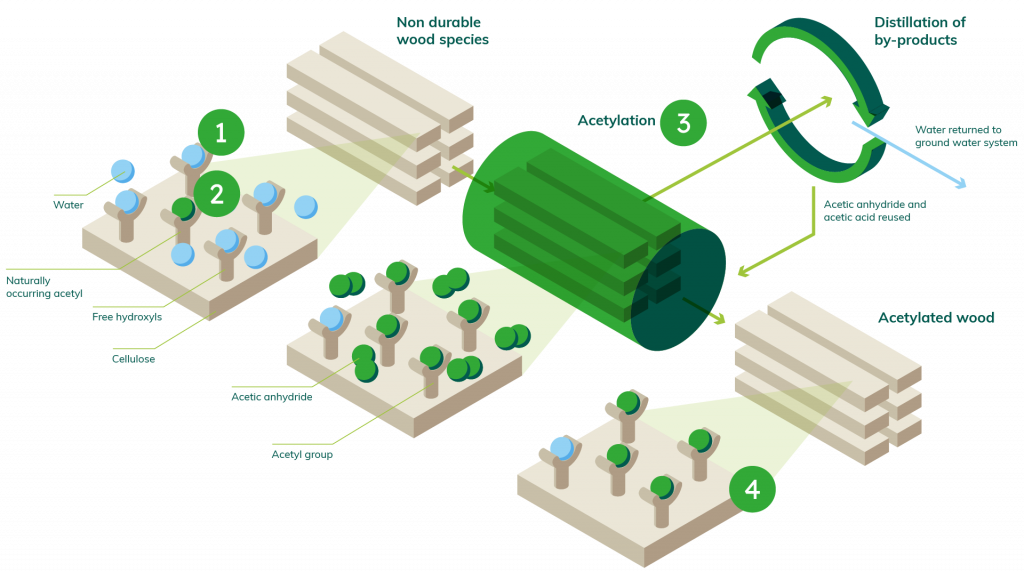My lumber yard has started carrying Accoya Poplar boards. Ten bucks a LF for 1x8.
I see online that some Accoya products come with a 50 year guarantee. And some siding comes in many "looks".
Anyone familiar with this product and what the process is to make it? It is touted as much friendlier to the planet and highly sustainable. Given that what little I've read so far referred to treating pine, and this is poplar, seems like any softish wood would work. Like maybe cedar.
Anyone used it?




 Reply With Quote
Reply With Quote


 Rather than spin tales of hydroxyls, hydrogen atoms and other chemistry jargon, in the simplest terms we can muster (in the context of Accoya wood technology) acetylation is: subjecting a softwood to a vinegar, which turns it into a hardwood by preventing the cells in the wood from being able to absorb water.
Rather than spin tales of hydroxyls, hydrogen atoms and other chemistry jargon, in the simplest terms we can muster (in the context of Accoya wood technology) acetylation is: subjecting a softwood to a vinegar, which turns it into a hardwood by preventing the cells in the wood from being able to absorb water.

